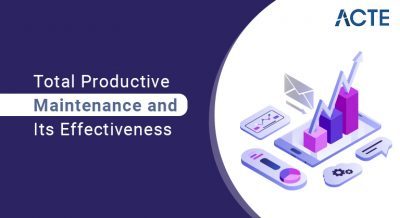
Project schedule development uses the outputs from the processes to define activities, sequence activities, estimate activity resources, and estimate activity durations in combination with the scheduling tool to produce the schedule model.
- What is scheduling in project management?
- How is project scheduling different from planning?
- Why should I create a project schedule?
- What are the steps in the project scheduling process?
- Project scheduling techniques – 3 main types
- Getting the right project scheduling software with Kissflow Project
- Schedule Inputs
- Scheduling Tools
- Use of Project Stages
- Project Review
- Characteristics of a project schedule
- Benefits of project scheduling in project management
- Conclusion
What is scheduling in project management?
As you may imagine, a project schedule contains over your average weekly planner notes. Project programing involves making a document, of late sometimes a digital document, that details the project timeline and therefore the structure resources needed to complete every task. The project schedule should be accessible to each team member. Its purpose is to speak vital info to the team, therefore it should be comprehensive and simple to know.
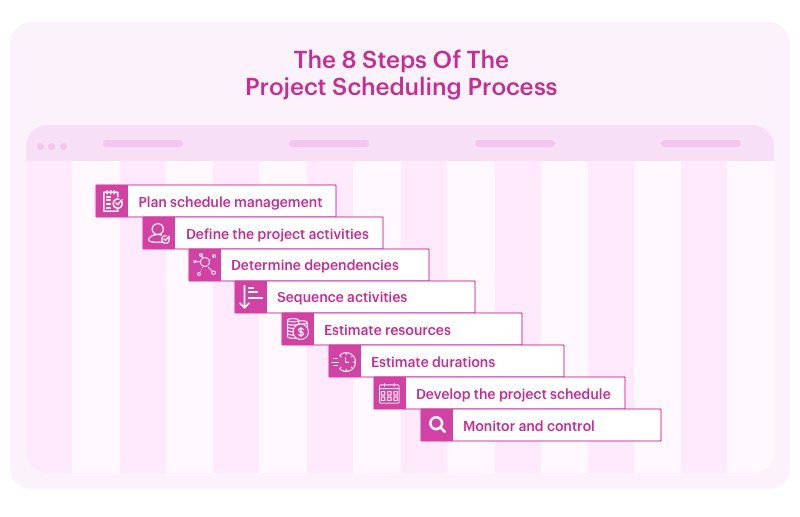
- Quite typically, these 2 terms ar used interchangeably however they need completely different roles within the successful completion of a project. On a better level, the project set up is the master blueprint whereas the project schedule details the precise tasks.
- Project coming up with primarily involves choosing the suitable policies, project methodologies, and procedures needed to deliver the project on time. Project programming, on the opposite hand, converts the plans, scope, and value into AN operational timeline.
How is project scheduling different from planning?
Why should I create a project schedule?
Project programming, once done well.
How does one produce a project schedule? Well, the project programming method may be diminished into eight manageable steps. Follow these and pretty presently you’ll be a programing professional.
- The groundwork for an honest project schedule is to ascertain the procedures, company policies, and documentation tips which will govern your project. The set up for schedule management outlines resources out there for the project and also the contingencies that will arise.
- It conjointly lists project stakeholders, itemizes people who should approve the schedule, and lists others who got to receive a duplicate.
- This document conjointly establishes who has the authority to create schedule changes, the method team members ought to follow so as to request a modification, and a project communication commit to alert the team of changes created throughout the course of the project.
- This can be as easy as making an inventory of tasks that has got to be completed so as to deliver your project. within the case of advanced comes, it should be useful to arrange these tasks within the type of at, a chart visualizing project tasks and their sub-tasks and to remain organized at work.
- One challenge during this a part of the project programing method is knowing a way to divide activities. take into account the 8/80 rule, that states that one activity ought to take between eight and eighty work hours.
- In team task management, tasks requiring fewer than eight hours might be classified with others and tasks over eighty hours are probably too cumbersome and may be diminished any. Activities ought to even be measurable, simply calculable, and associated with each a project deliverable and a budgeted price.
- Once you’ve got all the project activities listed, suppose through all rigorously to spot that tasks have faith in others to be completed. If you’re building a house, as an example, you can’t place the roof on till the frame is completed.
- It’s vital to properly outline all of your project dependencies thus you’ll be able to schedule accurately and avoid project delays.
- You can use the simplest project management software package to tackle project task dependencies by partaking with stakeholders, group action constraints associated with dependencies.
- After you’ve established dependencies among your activities, you’ll be able to sequence them.
- At now, you aren’t assignment any time to your activities in terms of labor hours or due dates.
- Instead, you’re that specialize in the order within which all project activities ought to be done so the foremost economical flow is made.
- Each activity in your project would require resources within the type of personnel, contractor prices, tools (physical and/or digital tools like software package programs), and space. confirm to think about different resources that are specific to your business or project. Estimate the resources required for every project activity.
- Remember that resource allocation can have an effect on your schedule; if constant team member is chargeable for multiple project tasks, they can’t be completed at constant time.
- This step is pretty obvious however important. however long can every project activity take? Underestimating can, of course, place you not on time and ultimately frustrate your client.
- Overestimating may leave team members or different resources sitting idle as they stay up for antecedent tasks to be completed. the simplest thanks to estimate length is to use knowledge from similar previous jobs.
- If you don’t have any knowledge to figure from and there’s no business normal to that you’ll be able to refer, AN estimate supported the typical of the simplest, worst, and presumably eventualities.
- At now, you ought to have all the data you would like to develop your project schedule. Taking into thought the length and resource necessities of every activity, additionally as their dependencies and correct sequence, you’ll be able to assign begin dates and due dates for every activity.
- There are multiple models and formulas for developing the project schedule, as well as vital path, vital chain, and resource leveling among others. every of these ways is deserve a piece of writing in itself, thus we have a tendency to won’t cowl them here. Take the time to search out a technique that works well for you.
- For example, Don’t ignore the calendar! Check vacation requests from team members. Don’t forget to incorporate factors like national holidays, company functions, neutral events, and different occasions that will have an effect on your schedule. If the total company shuts down for a vacation week, you’ll got to add that point to your due dates and manage client expectations consequently.
- Unlike the remainder of the project programing steps, Step eight is current. As a project manager, you’ll be observation and dominant your project schedule for the length of the project. This step involves running project reports and assessing the progress of a project against the schedule, managing performance, and communication with the team.
- When schedule changes should be created, you guarantee they’re distributed and communicated consistent with the set up arranged get in Step one. Throughout the project, you’ll make sure that every activity is on schedule and verify whether or not corrective action has to be taken if delays occur.
What are the steps in the project scheduling process?
1. set up schedule management
2. Outline the project activities
3. Verify dependencies
4. Sequence activities
5. Estimate resources
6. Estimate durations
7. Develop the project schedule
8. Monitor and management
- Task lists
- Gantt charts
- Calendars
- Regardless of the programming system or the project, variety of specific attributes are found in many another sensible schedule. Here are the highest ten!. It’s simply communicated. those that do the work should perceive what the schedule is all concerning. If none of your team has ever seen a vital Path methodology Diagram (CPM), the final thing you wish to try to to is use a CPM as your programming methodology. In general, schedules that are during a graphic format are most simply communicated
- It’s versatile. Schedules amendment. It’s a reality of project life. regardless of what you say or do, a high share of your schedules are aiming to amendment. Hopefully, these schedules won’t amendment as a results of mistakes that you simply create, however they’ll amendment, withal.
- It’s correlation with alternative comes appointed to the team. the only biggest influence on the schedule of your project is that the employment from alternative comes that are presently in your unit/team. If you prepare your schedule in isolation from alternative comes of the unit/team, it is, possibly, aiming to fail.
- It extends on the far side the day of the month of the contract. there’ll invariably be activities that reach or arise on the far side the written agreement day of the month. Your shopper can wish to raise you queries, contractors can decision you, and outline conferences are command. Anticipate these activities and build them into your schedule.
- Assists with pursuit, reporting, and communication progress
- Ensures most are on a similar page with tasks, dependencies, and deadlines
- Highlights problems and considerations, like an absence of resources
- Identifies task relationships
- Monitors progress and establish problems early
- Scheduling aims to predict the longer term, and it’s to think about several uncertainties and assumptions. As a result, many folks believe it’s additional of associate degree art than a science.
- But whether or not you are coming up with a team retreat, or leading a multimillion-dollar IT project, the schedule may be a crucial a part of your efforts. It identifies and organizes project tasks into a sequence of events that make the project management set up.
- A variety of inputs and tools ar utilized in the planning method, all of that are designed to assist you perceive your resources, your constraints, and your risks. the tip result’s a thought that links events within the best thanks to complete the project expeditiously
Project scheduling techniques – 3 main types:
There are many project programing techniques which will assist you break down your project into tiny, manageable tasks. a number of these techniques embrace:
1. Task lists
This is the best programing technique and works for little comes while not loads of interdependencies. However, for larger comes, it should not be the proper selection as following the progress will become a significant challenge. The task list contains the list of tasks and subtasks at the side of the team members appointed to try to to them. an internet project management software system will are available handy once you’re victimization task lists.
2. Calendar
The calendar are often wont to depict the project timelines of all the tasks throughout the course of the project. It’s a good approach to look at overlaps between activities. But, this approach suffers from associate degree inability to assign tasks and examine dependencies.
3. Gantt charts
A Gantt chart is that the most typical tool employed by project managers to examine the timelines and dependencies during a project. you’ll be able to get a fast estimate of the time needed to complete each task. The chart shows all the tasks, diagrammatic by bars, once they’re set to begin and finish, however long every task can last, task dependencies, and wherever there are overlaps.
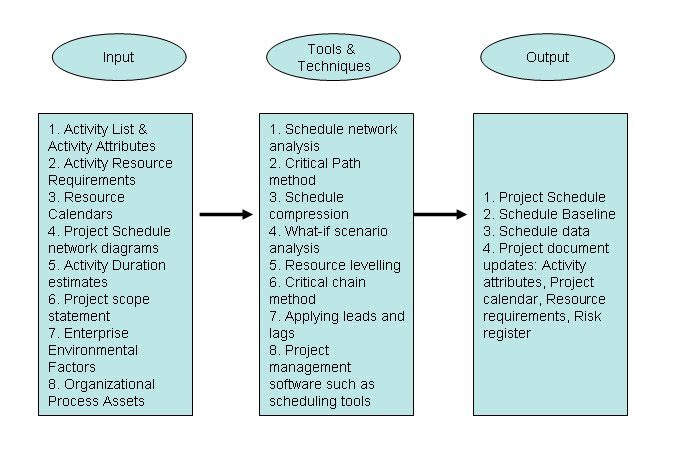
Getting the right project scheduling software with Kissflow Project:
It’s vital to own the most effective project management software package to assist you get organized and keep that manner. With Kissflow Project, you get a digital space that’s designed to provide you and your team the project programing tools you wish to remain on schedule. Intuitive kanban boards provide everybody a useful visual of project progress, and automatic alerts keep everybody within the loop on approaching deadlines.
Schedule Inputs:
You need many sorts of inputs to form a project schedule:
Personal and project calendars – Understanding operating days, shifts, and resource convenience is important to finishing a project schedule.
Description of project scope – From this, you’ll verify key begin and finish dates, major assumptions behind the set up, and key constraints and restrictions. you’ll conjointly embrace neutral expectations, which is able to typically verify project milestones.
Project risks – you wish to know these to create certain there is enough time beyond regulation to affect known risks – and with unidentified risks (risks are known with thorough Risk Analysis).
Lists of activities and resource necessities – once more, it is vital to work out if there are alternative constraints to think about once developing the schedule. Understanding the resource capabilities and skill you have got obtainable – further as company holidays and workers vacations – can have an effect on the schedule. A project manager ought to bear in mind of deadlines and resource convenience problems which will build the schedule less versatile.
Scheduling Tools:
Here area unit some tools and techniques for combining these inputs to develop the schedule:
Schedule Network Analysis – this is often a graphic illustration of the project’s activities, the time it takes to finish them, and therefore the sequence during which they have to be done. Project management software package is usually wont to produce these analyses – Gantt charts and irreverent Charts area unit common formats.
Critical Path Analysis – this is often the method of viewing all of the activities that has got to be completed, and shrewd the “best line” – or crucial path – to require in order that you will complete the project within the minimum quantity of your time. the tactic calculates the earliest and latest potential begin and end times for project activities, and it estimates the dependencies among them to make a schedule of crucial activities and dates. Learn additional concerning crucial Path Analysis.
Schedule Compression – This tool helps shorten the overall period of a project by decreasing the time assigned for sure activities. It’s done in order that you’ll be able to meet time constraints, and still keep the first scope of the project. you’ll be able to use 2 ways here:
Crashing – this is often wherever you assign additional resources to activity, therefore decreasing the time it takes to finish it. this is often supported the idea that the time you save can offset the else resource prices.
Fast-Tracking – This involves rearranging activities to permit additional parallel work. this suggests that belongings you would unremarkably do one when another area unit currently done at identical time. However, do bear in mind that this approach will increase the danger that you will miss things, or fail to handle changes.
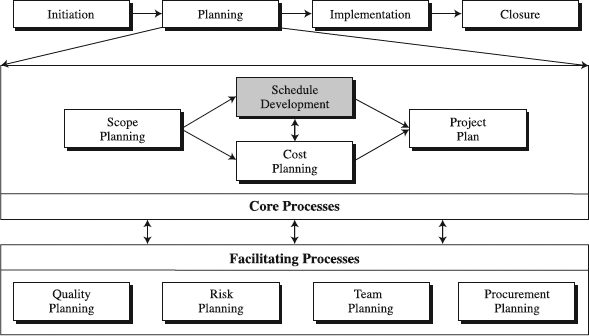
Use of Project Stages:
One of the largest reasons that comes over-run is that the “final” sprucing and error-correction takes much longer than anticipated. during this approach, comes will appear to be “80% complete” for eightieth of the time! what is worse, these comes will appear to air schedule till, all of a unforeseen, they over-run radically.
A good approach of avoiding this is often to schedule comes in distinct stages, wherever final quality, finished elements are delivered at the tip of every stage. This way, quality issues will be known early, and corrected before they seriously threaten the project schedule.
Project Review:
Once you have got printed the fundamental schedule, you would like to review it to form positive that the temporal order for every activity is aligned with the required resources. Here are tools normally accustomed do this:
“What if” state of affairs analysis – This technique compares and measures the results of various eventualities on a project. you employ simulations to see the results of assorted adverse, or harmful, assumptions like resources not being offered on time, or delays in different areas of the project. you’ll then live and set up for the risks exhibit in these eventualities.
Resource leveling – Here, you set up the sequence of activities to deal with the likelihood of out of stock resources, and to form positive that excessive demand isn’t placed on resources at any purpose in time. If resources are offered solely in restricted quantities, then you alter the temporal order of activities in order that the foremost important activities have enough resources.
Critical chain technique – This additionally addresses resource accessibility. You intend activities victimisation their latest doable begin and end dates. This adds additional time between activities, that you’ll then use to manage work disruptions.
Risk multipliers – Risk is inevitable, thus you would like to organize for its impact. Adding additional time to insecure activities is one strategy. Another is to feature a time multiplier factor to sure tasks or sure resources to offset excessively optimistic time estimation.
Characteristics of a project schedule:
Benefits of project scheduling in project management:
Project planning provides the subsequent benefits:
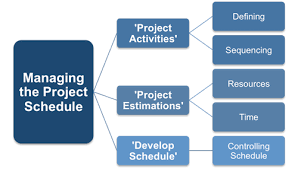
Conclusion:



